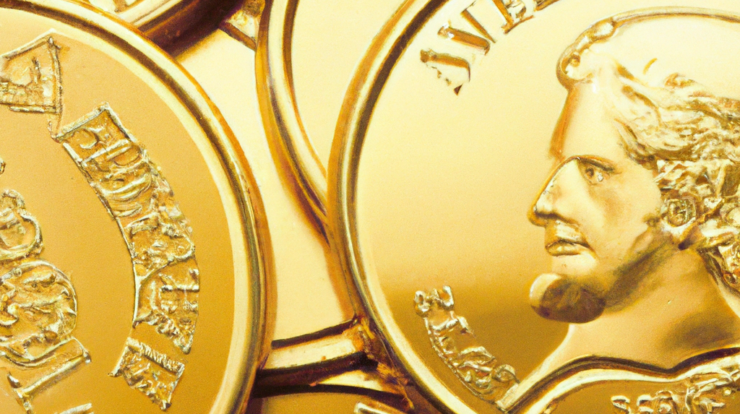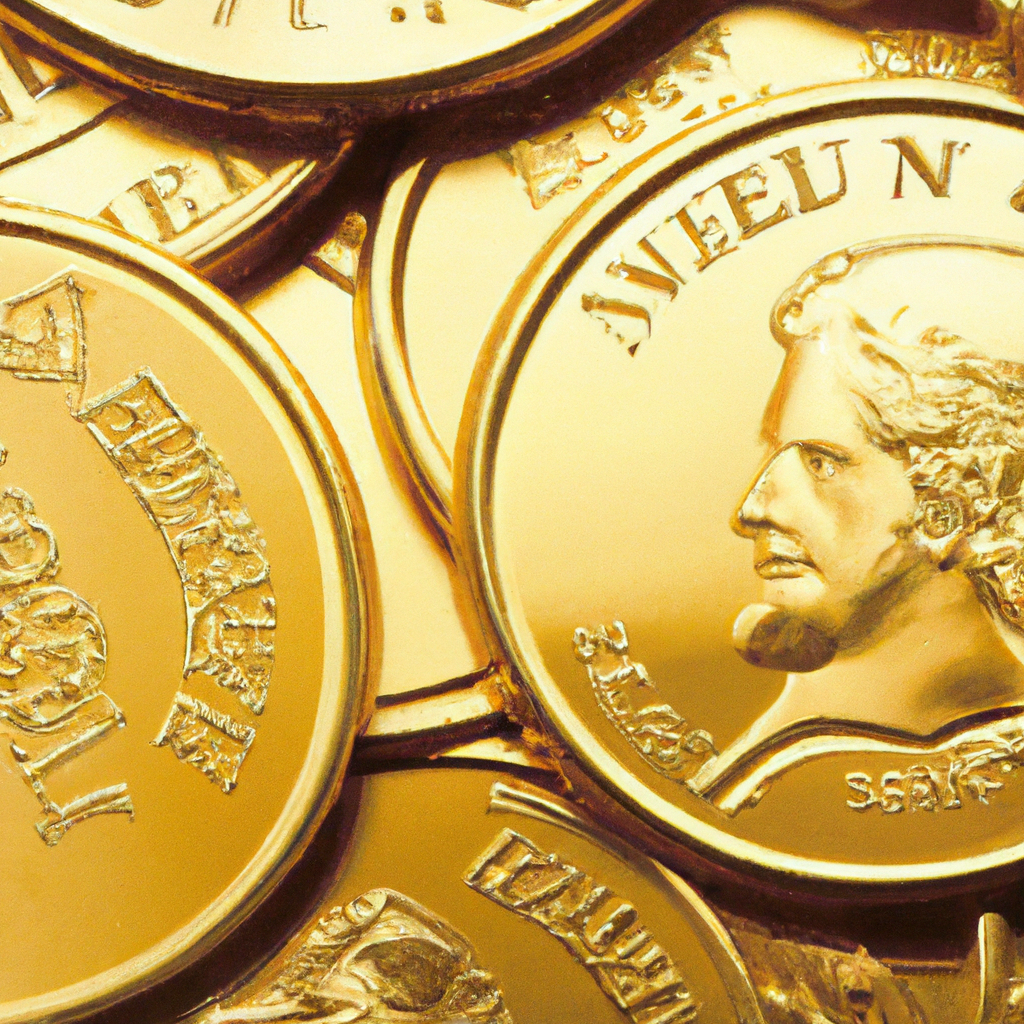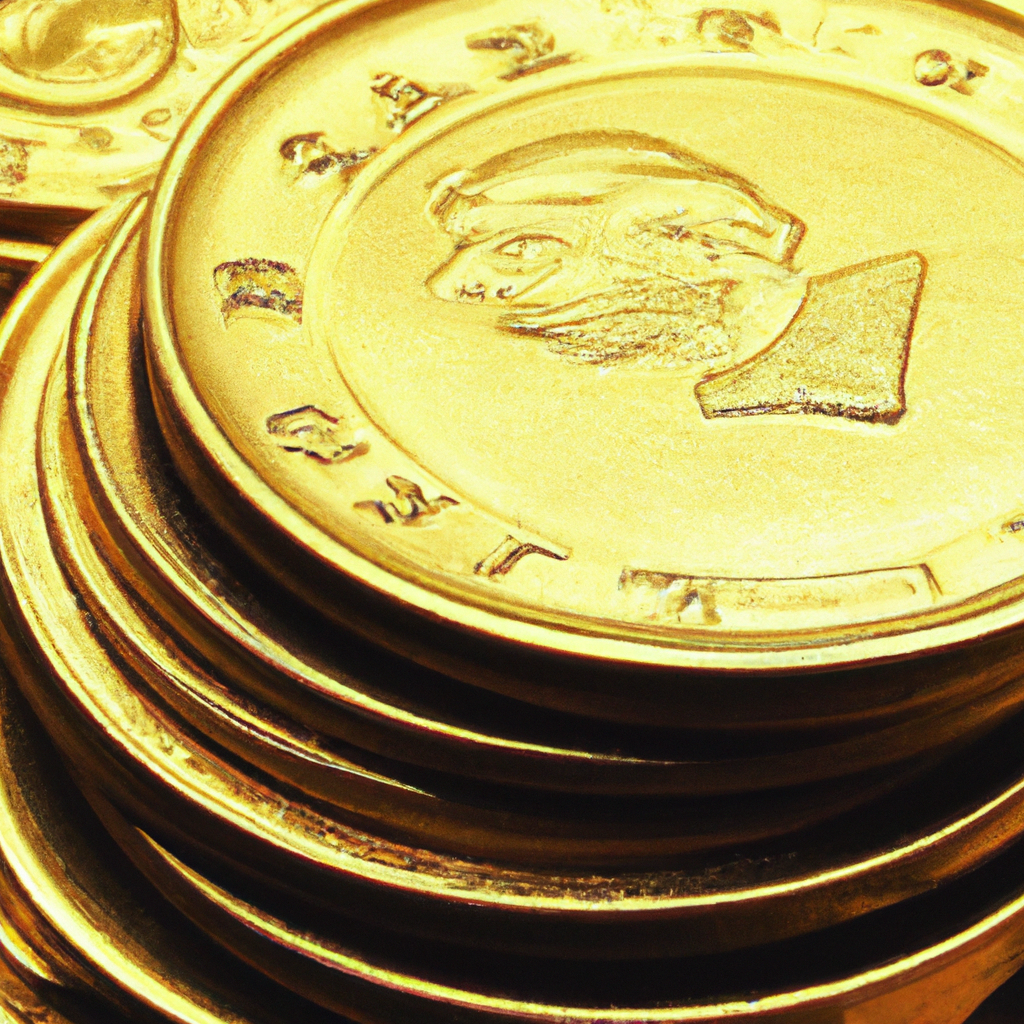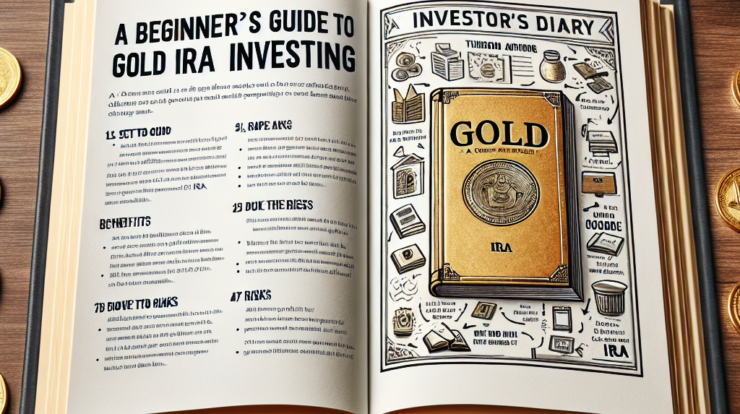
Looking to diversify your investment portfolio? Look no further than gold IRA investing. In this comprehensive guide, we will explore the ins and outs of this investment strategy, providing you with the information and advice you need to make informed decisions. Whether you’re a seasoned investor or just starting out, understanding the world of gold IRA investing is crucial for long-term financial success. So, let’s delve into the world of gold IRA investing and unlock the potential it holds for your portfolio.

Click here to understand the basics of gold investing
What is a Gold IRA?
Definition of a Gold IRA
A Gold IRA, also known as a precious metals IRA, is a type of individual retirement account that allows investors to hold physical gold and other eligible precious metals as part of their retirement portfolio. Unlike traditional IRAs that mainly consist of stocks, bonds, and mutual funds, a Gold IRA provides the opportunity to diversify holdings into tangible assets like gold bars, coins, and bullion.
Purpose of a Gold IRA
The purpose of a Gold IRA is to provide investors with a way to safeguard their retirement savings against market volatility, inflation, and geopolitical risks. Gold has been recognized for centuries as a store of value and has historically performed well during uncertain economic times. By including gold in an IRA, investors can potentially mitigate risks and protect their wealth in the long run.
Eligible Precious Metals for a Gold IRA
A Gold IRA allows for the inclusion of various eligible precious metals. These metals include gold, silver, platinum, and palladium. The IRS has specific requirements regarding the purity and types of precious metals that can be held in a Gold IRA. Generally, gold and silver coins and bars produced by certain approved mints are accepted, while collectible or rare coins are not eligible.
Advantages of Gold IRA Investing
Portfolio Diversification
One of the key advantages of investing in a Gold IRA is portfolio diversification. By adding physical gold and other precious metals to your retirement portfolio, you can reduce the reliance on traditional assets like stocks and bonds. Gold has historically had a low correlation with other asset classes, which means its value tends to move independently from stocks and bonds. This diversification can help lower overall portfolio risk and potentially enhance returns.
Inflation Hedge
Gold has long been considered an effective hedge against inflation. As the purchasing power of fiat currencies tends to erode over time due to inflation, the value of gold has historically risen. By including gold in a Gold IRA, you can potentially preserve your purchasing power and protect your retirement savings from the eroding effects of inflation.
Safe Haven Asset
Gold is widely regarded as a safe haven asset during times of economic uncertainty and market turmoil. When stock markets experience significant declines or geopolitical tensions escalate, investors often flock to gold as a safe store of value. By holding gold in a Gold IRA, you can have peace of mind knowing that your retirement savings are backed by an asset that has stood the test of time as a safe haven.
Protection against Geopolitical Risks
Geopolitical risks, such as political instability, conflicts, and economic sanctions, can have a significant impact on financial markets. These risks can lead to extreme volatility and potential losses for investors. Gold has historically been resilient in the face of geopolitical events and has often performed well in times of crisis. Including gold in a Gold IRA can provide a hedge against geopolitical risks and help protect your retirement savings.
Understanding Gold IRA Rules and Regulations
IRS Guidelines for Gold IRA Investments
The IRS sets guidelines and regulations for Gold IRA investments to ensure compliance and prevent potential misuse of retirement funds. The IRS requires that the gold and other precious metals held in a Gold IRA meet specific purity standards. For gold, it must have a minimum fineness of 0.995, while silver must have a minimum fineness of 0.999. It is crucial to work with a reputable IRA custodian or trustee who can ensure compliance with IRS guidelines.
Required Minimum Distributions (RMDs)
Like traditional IRAs, Gold IRAs are subject to required minimum distributions (RMDs) once the account holder reaches the age of 72. RMDs are the minimum amount that account holders must withdraw from their retirement accounts each year. However, investors can take their RMDs either in cash or in the form of physical gold or other eligible precious metals.
Gold IRA Custodians and Trustees
Gold IRAs require a custodian or trustee to hold and manage the physical gold and other precious metals on behalf of the account holder. A custodian acts as the intermediary between the account holder and the IRS, ensuring compliance with IRS regulations. It is essential to research and choose a reputable and experienced custodian who specializes in Gold IRAs to ensure the security and proper management of your retirement assets.
Types of Gold Products Allowed in a Gold IRA
The IRS allows specific types of gold products to be held in a Gold IRA. Generally, gold coins and bars produced by approved mints are eligible. Examples of eligible gold coins include American Gold Eagles, Canadian Gold Maple Leafs, and Australian Gold Kangaroos. Eligible gold bars typically have a minimum purity of 99.5%. It is essential to consult with a reputable custodian or trustee to determine which gold products are allowed in a Gold IRA.

Learn why gold is considered a safe haven asset
Choosing a Gold IRA Custodian
Factors to Consider when Selecting a Custodian
When choosing a custodian for your Gold IRA, several factors should be considered to ensure the best possible investment experience. These factors include the custodian’s reputation and reliability, fees and storage options, and customer service and support. Taking the time to research and compare different custodians can help you make an informed decision and find a custodian that aligns with your investment goals and preferences.
Reputation and Reliability
A crucial factor to consider when selecting a custodian is their reputation and reliability. Look for custodians with a solid track record and positive reviews from clients. It is also essential to ensure that the custodian has proper licensing and is in compliance with regulatory requirements. By choosing a reputable custodian, you can have confidence in the security and integrity of your Gold IRA.
Fees and Storage Options
Fees are an important consideration when choosing a custodian for your Gold IRA. Different custodians charge varying fees for their services, including account setup fees, annual maintenance fees, storage fees, and transaction fees. It is essential to understand the fee structure and compare it with other custodians to ensure you are getting competitive pricing. Additionally, consider the custodian’s storage options, such as segregated or allocated storage, to ensure the safekeeping of your precious metals.
Customer Service and Support
Good customer service and support are invaluable when it comes to managing your Gold IRA. Choose a custodian that provides prompt and knowledgeable customer service, whether it’s answering questions, providing account updates, or addressing any concerns. Look for custodians that offer multiple communication channels and have a reputation for excellent customer support. This will ensure that you have a positive and smooth experience throughout your Gold IRA investment journey.
Opening a Gold IRA Account
Selecting a Custodian
Before opening a Gold IRA account, you need to select a custodian that specializes in precious metals IRA services. Research and compare different custodians based on their reputation, fees, storage options, and customer service. Once you have chosen a custodian that suits your needs, you can proceed with the account opening process.
Completing the Application
To open a Gold IRA account, you will need to complete an application with your chosen custodian. The application will require personal information, such as your name, contact details, and social security number. You may also need to provide proof of identity and residency, such as a valid ID, driver’s license, or passport. It is important to complete the application accurately and thoroughly to ensure a smooth account opening process.
Transferring or Rolling Over Funds
To fund your Gold IRA account, you have the option to transfer funds from an existing retirement account or roll over funds from a traditional IRA or 401(k). Transferring or rolling over funds allows you to consolidate your retirement savings into a Gold IRA without incurring taxes or penalties. Your chosen custodian will guide you through this process, ensuring that the funds are transferred or rolled over correctly.
Funding and Investing
Once your Gold IRA account is funded, you can start investing in physical gold or other eligible precious metals. Work closely with your custodian to make informed investment decisions based on your financial goals and risk tolerance. The custodian will facilitate the purchase and storage of the precious metals within your Gold IRA account.
Gold IRA Investment Options
Physical Gold
Investing in physical gold is one of the primary options for Gold IRA investors. Physical gold can be purchased in the form of gold bars, coins, or bullion. The value of physical gold is determined by its weight and purity, and it can be stored in a secure location provided by the custodian. Physical gold offers a tangible and reliable asset that can potentially retain its value over time.
Gold ETFs and Mutual Funds
Gold exchange-traded funds (ETFs) and mutual funds provide alternative investment options for Gold IRA investors who prefer not to hold physical gold. These investment vehicles allow investors to gain exposure to the price movements of gold without directly owning the physical metal. Gold ETFs and mutual funds are traded on stock exchanges, providing liquidity and ease of investment.
Gold Mining Stocks
Investing in gold mining stocks is another option for Gold IRA investors. Gold mining stocks provide exposure to companies involved in the exploration, production, and marketing of gold. The performance of gold mining stocks is influenced by various factors, including the price of gold, company operations, and market conditions. Investing in gold mining stocks can offer the potential for capital appreciation and dividends.
Gold Futures and Options
Gold futures and options are derivatives contracts that allow investors to speculate on the future price of gold. While these investment instruments are more complex and suitable for experienced investors, they can provide additional investment opportunities within a Gold IRA. Trading gold futures and options requires knowledge of the futures market and a thorough understanding of the associated risks.
Managing and Monitoring a Gold IRA
Regular Portfolio Review
To effectively manage a Gold IRA, it is essential to conduct regular portfolio reviews. Periodically assess the performance of your Gold IRA holdings and consider rebalancing if necessary. Rebalancing involves adjusting the allocation of assets to maintain the desired level of risk and return. By reviewing your Gold IRA regularly, you can ensure that your investment strategy aligns with your financial goals.
Keeping Track of Gold Market Trends
Staying informed about gold market trends is crucial when managing a Gold IRA. Keep track of factors that influence the price of gold, such as economic indicators, geopolitical events, and central bank policies. By staying informed, you can make more informed investment decisions and potentially take advantage of market opportunities.
Rebalancing and Adjusting
As market conditions change, it may be necessary to rebalance and adjust the allocation of assets within your Gold IRA. Rebalancing involves selling or buying assets to realign the portfolio with your target asset allocation. Adjusting the allocation of gold and other precious metals can help manage risk and maximize potential returns. Consult with your custodian or a financial advisor to determine the appropriate rebalancing and adjustment strategies for your Gold IRA.
Considering Professional Help
Managing a Gold IRA can be complex, especially for inexperienced investors. Consider seeking professional help from a financial advisor who specializes in retirement planning and Gold IRAs. A knowledgeable advisor can provide valuable insights, guidance, and recommendations to help you make informed investment decisions and optimize your Gold IRA strategy.
Pitfalls and Risks of Gold IRA Investing
Market Volatility and Price Fluctuations
One of the significant risks of Gold IRA investing is market volatility and price fluctuations. The price of gold can experience sharp fluctuations in response to economic, political, and market conditions. While gold has historically been a stable asset, it is not immune to short-term price volatility. It is important to be prepared for potential short-term losses and focus on the long-term value and stability of gold.
Storage and Security Risks
Physical gold held in a Gold IRA requires proper storage and security measures to protect against theft and damage. Choose a custodian that offers secure and insured storage facilities for your precious metals. Ensure that the custodian follows strict security protocols and has appropriate insurance coverage. By addressing storage and security risks, you can have confidence in the safety and preservation of your gold investments.
Potential Scams and Fraudulent Schemes
The precious metals industry can sometimes attract fraudulent schemes and scams targeting unsuspecting investors. Be cautious of offers that promise unrealistically high returns or involve unregistered dealers. Take the time to research and verify the reputation and credibility of any gold dealers or investment opportunities. Stick to reputable custodians and trusted sources when making gold-related investments.
Liquidity Concerns
While gold is considered a relatively liquid asset, there can be liquidity concerns when it comes to selling physical gold. Selling gold coins or bars may involve finding a buyer and navigating the sales process. Consider the potential time and costs associated with selling physical gold and ensure that you have a plan in place for liquidating your gold holdings when needed.
Tax Considerations for Gold IRA Investors
Tax Benefits of a Gold IRA
One of the tax benefits of a Gold IRA is the potential for tax-deferred growth. As with traditional IRAs, earnings and capital gains generated within a Gold IRA are not subject to current income taxes. Taxes on these gains are deferred until the funds are withdrawn during retirement. This can provide investors with potential tax savings and allow their investments to grow without being eroded by taxes.
Tax Implications of Distributions
When distributions are taken from a Gold IRA, they are generally subject to income taxes. The tax treatment of Gold IRA distributions depends on whether the IRA is a traditional IRA or a Roth IRA. In the case of a traditional Gold IRA, distributions are taxed as ordinary income. However, if the Gold IRA is a Roth IRA, qualified distributions can be tax-free, as long as certain requirements are met.
Roth IRA Conversion Option
Investors with a traditional Gold IRA also have the option to convert their IRA to a Roth IRA. A Roth IRA offers tax-free distributions in retirement, but the conversion involves paying taxes on the converted amount in the year of the conversion. The decision to convert to a Roth IRA should be based on careful consideration of your individual tax situation and long-term retirement goals.
Consulting with a Tax Advisor
Given the complex tax considerations related to Gold IRA investing, it is advisable to consult with a tax advisor or financial professional who specializes in retirement planning and tax strategies. A tax advisor can help you navigate the tax implications of Gold IRA investments, optimize your tax advantages, and ensure compliance with IRS regulations.
Conclusion
In summary, a Gold IRA offers investors the opportunity to diversify their retirement portfolio and safeguard their savings against market risks and inflation. By including physical gold and other eligible precious metals in a Gold IRA, investors can potentially benefit from portfolio diversification, inflation hedging, and protection against geopolitical risks. Understanding the rules and regulations, carefully selecting a custodian, and making informed investment decisions are crucial in maximizing the potential advantages of a Gold IRA. While there are risks and considerations associated with Gold IRA investing, proper management, monitoring, and tax planning can help investors navigate potential pitfalls and optimize their retirement savings. It is important for investors to conduct thorough research and consult with financial professionals to make informed decisions and ensure a successful Gold IRA investment journey.
Important considerations for Gold IRA investors include understanding IRS guidelines, selecting a reputable custodian, choosing suitable investment options, regularly reviewing and adjusting the portfolio, and considering tax implications. By following these considerations and staying informed about market trends, investors can effectively navigate the world of Gold IRA investing and potentially enhance their retirement savings.









